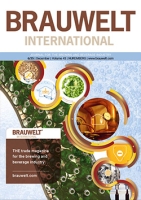Undesirable substances in hops include environmental contaminants such as e.g. harmful metals, dioxins, polychlorinated biphenyls, polycyclic aromatic hydrocarbons, mycotoxins and radionuclides. This summary presents and evaluates current data on the above contaminants in hops.
Humulinones are formed by the oxidation of alpha acids and are closely related to isoalpha acids in their molecular structure. It’s been reported that humulinones are 65 % as bitter as iso alpha acids and their discovery in hops and hop pellets are relatively new. Interestingly, the small concentration of humulinones in leaf hops increase after pelletization, despite vacuum packaging and cold storage. Leaf hops and hop pellets can contain as much as 0.2 % - 0.5 % w/w humulinones whereas CO2 hop extract contains none. We believe pelletization breaks the lupulin
VTT Technical Research Centre of Finland Ltd rescently published a scientific study on the successful generation of hybrid lager yeasts. For centuries the same few yeast strains have been used in the production of lager beer, in contrast to ale, whisky, wine and cider, for which there is a wide range of yeast strains available to produce different nuances of flavour. VTT has been developing hybrid lager yeasts so as to impart new flavour to the beer and accelerate the production process.
Genotyping is the characterization of a hop variety by examination of its DNA sequences. This information is used in the Hopsteiner breeding program to select parents and evaluate seedlings, but molecular markers have immediate applications to quality control. For example, prior to propagation for planting a new field, the source material is tested for identity and purity by comparing its DNA fingerprints to an in-house database of molecular marker profiles for reference varieties. Until now, genotyping in hops, or other niche crops, lacked sufficient power, due to the small number of features measured in each assay and the considerable cost. Hopsteiner has solved this by applying Next Generation Sequencing (NGS) to hops, which increases the number and diversity of measured DNA features per assay -- far beyond what is required for routine genotyping.
Brasil Brau is one of the largest professional events for the brewing industry in Brazil and encompasses the industry’s entire productive chain. The fair presents the latest technological developments in the brewing industry.
Schönberger, C.; Wiesen, E.: Hop Harvest Guide 2014, 2014, 48 pages, paperback, Fachverlag Hans Carl GmbH, Nuremberg, Germany, 14.90 EUR
Biendl, M.; Engelhard, B.; Forster, A.; Gahr, A.; Lutz, A.; Mitter, W.; Schmidt, R.; Schönberger, C.: Hops: Their Cultivation, Composition and Usage, 2014, 336 pages, hardcover, Fachverlag Hans Carl GmbH, Nuremberg, Germany, 99.00 EUR.
The quality of beer foam can greatly influence consumer perception. As a result, measuring foam stability is a standard quality control parameter at most breweries. Besides others, foam stability measurements can be performed using Analytica-EBC Method 9.42 [1]. This test measures the stability of foam at 20 °C even though beers are poured and consumed cold. It was discovered that better NIBEM foam results were seen when beers were tested cold compared to room temperature. When an American Lager was treated with 6 ppm of iso-alpha acids, alpha acids, tetrahydro-iso-alpha acids and hexahydro-iso-alpha acids an increase in foam stability was seen as the temperatures of the beers tested got colder. Foam enhancing hop acids such as tetra, hexa and alpha acids experience up to 80 second improvement in foam stability when measured at 14 vs. 21 °C, whereas iso-slpha acids alone only saw about 60 second improvement under the same conditions. ...
Worcestershire based hop grower S J Adams & Son has been named the overall winner of the British Hop Awards for 2014, as the results of the 71st Institute of Brewing & Distilling’s (IBD) annual competition were announced at an awards ceremony in London on the 23rd of January.
In recent years there has been a growing trend towards beers with unique aromas, and breweries
Dual use | About two million tons of wet brewers’ grains come from German breweries every year. Traditionally, this is almost exclusively used as animal fodder [1]. However, in the wake of restructuring in agriculture and corporate amalgamations in the food sector, with an associated rise in waste from the food sector, such use is becoming increasingly problematic [2]. New recycling routes have thus to be found. Recovery of energy from the high organic content in brewers’ grain is of particular interest.



